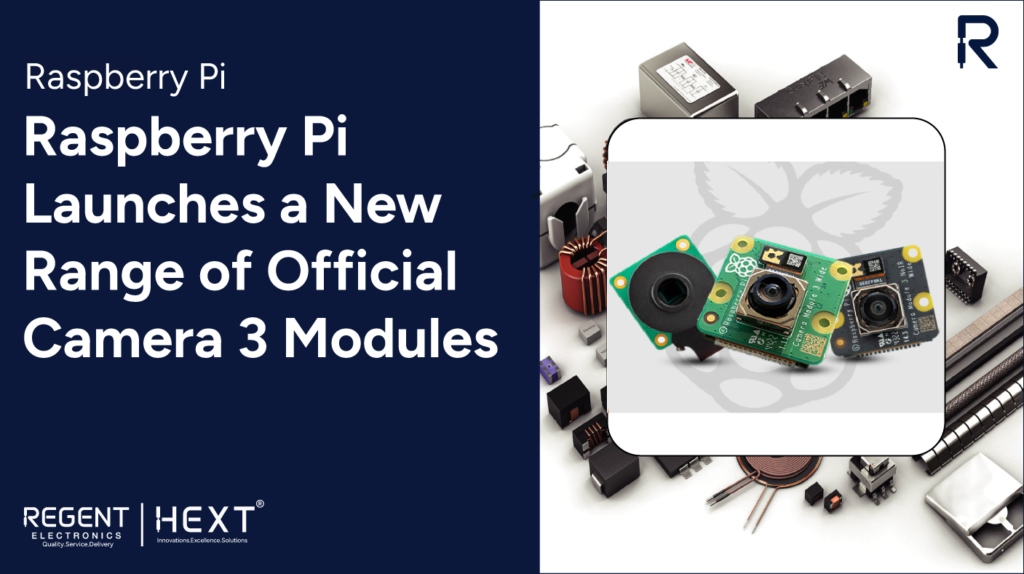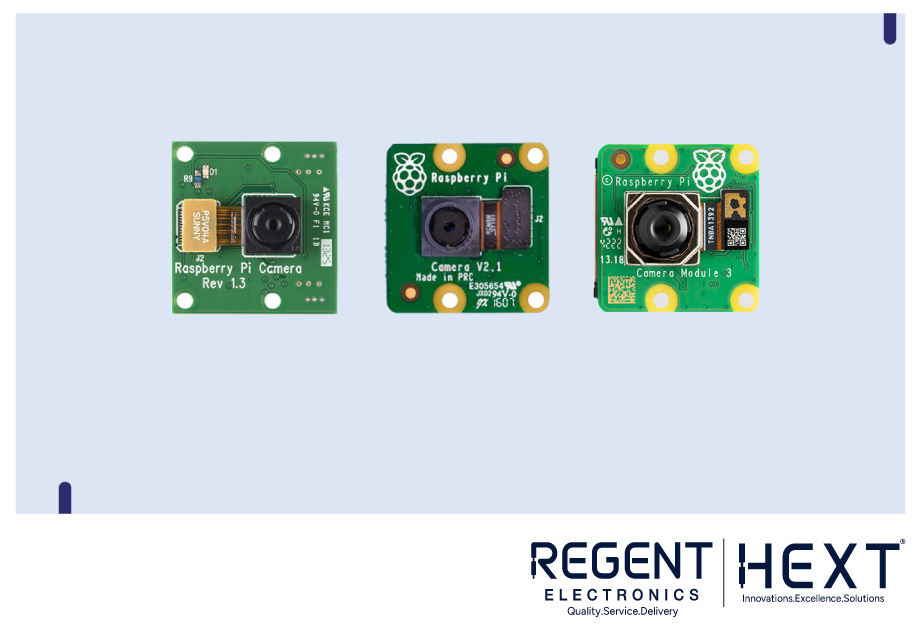
Raspberry Pi Launches a New Range of Official Camera 3 Modules
If you’re passionate about DIY electronics, chances are you’re already familiar with Raspberry Pi. This compact yet powerful computer enables users to interact with the world through a variety of digital input and output devices. One such essential accessory is the Raspberry Pi Camera Module, which allows users to capture high-quality images and videos seamlessly.
Evolution of Raspberry Pi Camera Modules

The Raspberry Pi Camera Module has undergone several advancements since its initial launch. The original 5-megapixel model debuted in 2013, followed by the 8-megapixel Camera Module v2 in 2016. In 2020, Raspberry Pi introduced the 12-megapixel High-Quality Camera.
Now, Raspberry Pi has unveiled its latest series of camera modules – the Raspberry Pi Camera Module 3. This new module offers enhanced imaging capabilities and cutting-edge features, making it an excellent choice for photography, videography, and AI-driven applications.
Features of Raspberry Pi Camera Module 3
The Camera Module 3 is a compact, high-performance camera featuring an IMX708 12-megapixel sensor with HDR and phase detection autofocus (PDAF). It is available in both standard and wide-angle variants, with or without an infrared cut filter (NoIR versions).
With the ability to capture Full HD videos and still images, the Camera Module 3 operates seamlessly using the libcamera library. This ensures beginners can use it effortlessly while offering advanced users plenty of flexibility. Moreover, the module is compatible with all Raspberry Pi computers.
The physical size of the Camera Module 3 remains the same as its predecessor (Camera Module 2), although it is slightly taller due to its improved optics.
Variants of Raspberry Pi Camera Module 3
Here are the different versions available:

- Raspberry Pi Camera 3 (Standard Version)
- Raspberry Pi Camera 3 NoIR (Infrared Version)
- Raspberry Pi Camera 3 Wide (Wide-Angle Standard Version)
- Raspberry Pi Camera 3 Wide NoIR (Wide-Angle Infrared Version)
- Raspberry Pi HQ Camera – M12 Mount (Not part of Module 3 but an upgrade to the HQ Camera)
Key Features of Camera Module 3
- 12-Megapixel Sony IMX708 Sensor (Back-illuminated and stacked CMOS)
- Phase Detection Autofocus (PDAF) for rapid and accurate focusing
- HDR Mode (Up to 3-megapixel output)
- 2D Dynamic Defect Pixel Correction (DPC)
- High Signal-to-Noise Ratio (SNR) for enhanced image quality
- Supports CSI-2 Serial Data Output and I2C Fast Mode
- Infrared cut filter available in standard versions; absent in NoIR versions
Technical Specifications
| Specification | Details |
| Sensor | Sony IMX708 |
| Resolution | 11.9 Megapixels |
| Sensor Size | 7.4mm Sensor Diagonal |
| Pixel Size | 1.4μm × 1.4μm |
| Image Output | RAW10 |
| Video Modes | 1080p50, 720p100, 480p120 |
| Autofocus System | Phase Detection Autofocus (PDAF) |
| Dimensions | 25 × 24 × 11.5mm (12.4mm height for Wide variants) |
| Cable Connector | 15 × 1mm FPC |
| Ribbon Cable Length | 200mm |
| Compliance | FCC, EMC 2014/30/EU, RoHS 2011/65/EU |
| Production Lifetime | Available until at least January 2030 |
Key Differences Between Variants

The primary differences among the Camera Module 3 variants are the field of view and the presence or absence of the infrared cut filter. The standard versions are ideal for general photography, while the NoIR versions are best suited for low-light and infrared applications. The wide-angle variants provide an expanded field of view, making them suitable for surveillance and landscape photography.
Conclusion
The Raspberry Pi Camera Module 3 is a versatile and powerful camera designed for a wide range of applications. Its high-resolution imaging, phase detection autofocus, and HDR mode make it a perfect choice for photography, videography, and AI projects. Additionally, the availability of both visible light and infrared versions ensures flexibility for different user requirements.
This new camera module is a valuable addition to the Raspberry Pi ecosystem and is expected to be well-received by the DIY electronics and maker communities.
If you’re looking to get started with the Raspberry Pi Camera Module 3, check out the latest models available at Regent Electronics and begin your journey into high-quality Raspberry Pi photography today!
